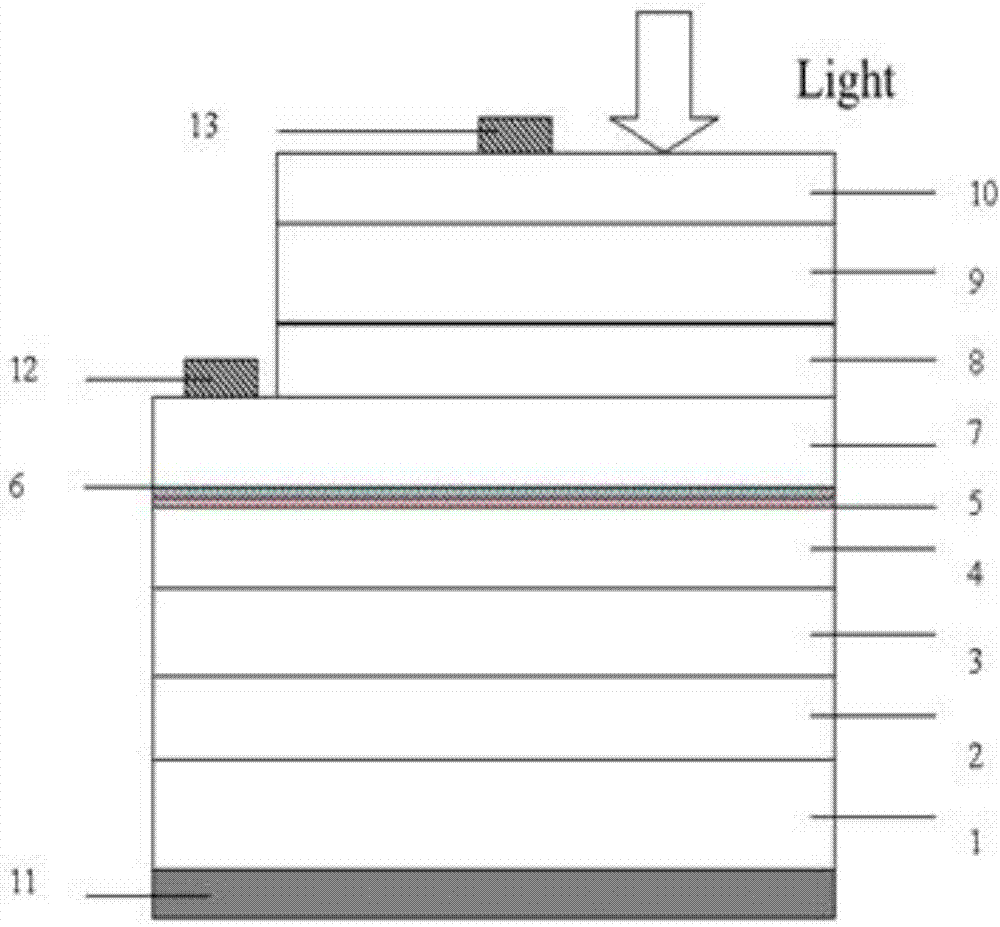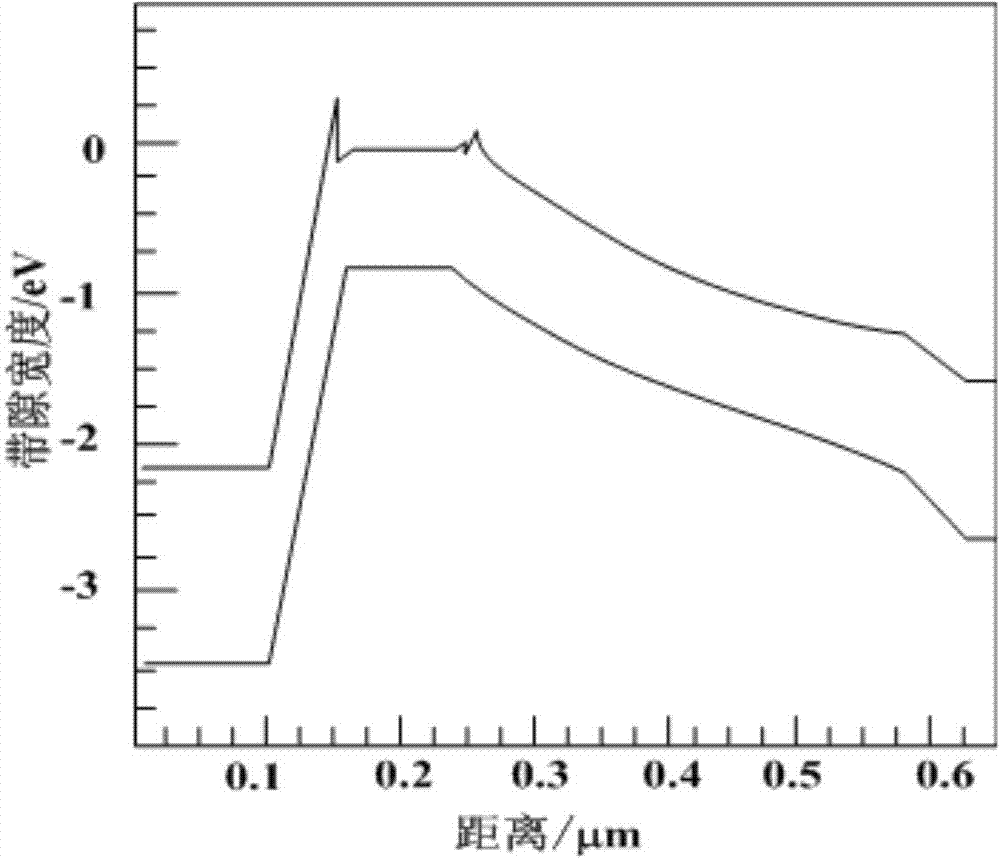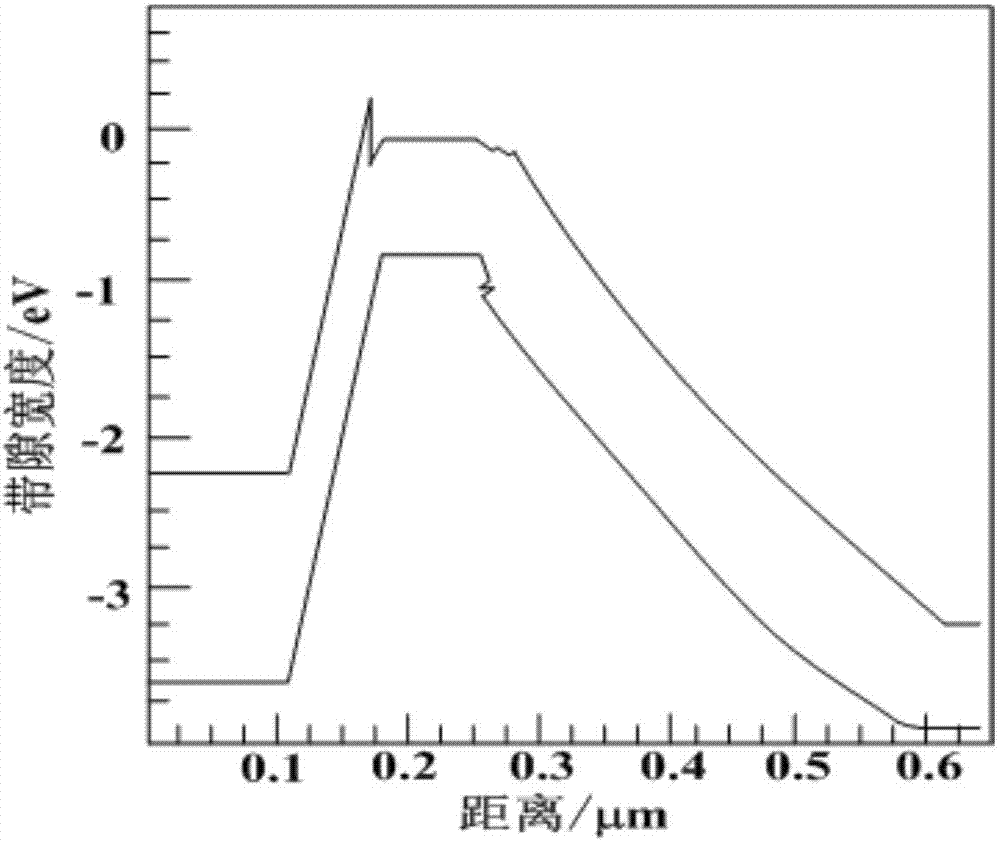Base-region-gradient uni-traveling-carrier double-heterojunction phototransistor detector
A photosensitive transistor and double heterojunction technology, applied in semiconductor devices, electrical components, circuits, etc., can solve problems such as low hole mobility and limited photoelectric response speed of devices
- Summary
- Abstract
- Description
- Claims
- Application Information
AI Technical Summary
Problems solved by technology
Method used
Image
Examples
Embodiment Construction
[0023] In order to make the object, technical solution and advantages of the present invention clearer, the present invention will be described in further detail below in conjunction with specific embodiments and with reference to the accompanying drawings.
[0024] see figure 1 As shown, the InP / InGaAsP unidirectional carrier transport double heterojunction phototransistor (UTC-DHPT) detector provided by the embodiment of the present invention includes:
[0025] An InP substrate 1, on which an InP buffer layer 2, an InGaAsP sub-collector region 3, an InGaAsP collector region 4, InGaAsP transition layers 5 and 6, Material bandgap wavelength gradient InGaAsP base region 7, InP emitter region 8, InP cover layer 9, InGaAs ohmic contact layer 10; an emitter 13, made on the InGaAs ohmic contact layer by sputtering; a base 12, using The sputtering method is used to make it on the InGaAsP base region; a collector electrode 11 is made on the InP substrate by the sputtering method.
...
PUM
 Login to View More
Login to View More Abstract
Description
Claims
Application Information
 Login to View More
Login to View More - R&D
- Intellectual Property
- Life Sciences
- Materials
- Tech Scout
- Unparalleled Data Quality
- Higher Quality Content
- 60% Fewer Hallucinations
Browse by: Latest US Patents, China's latest patents, Technical Efficacy Thesaurus, Application Domain, Technology Topic, Popular Technical Reports.
© 2025 PatSnap. All rights reserved.Legal|Privacy policy|Modern Slavery Act Transparency Statement|Sitemap|About US| Contact US: help@patsnap.com



